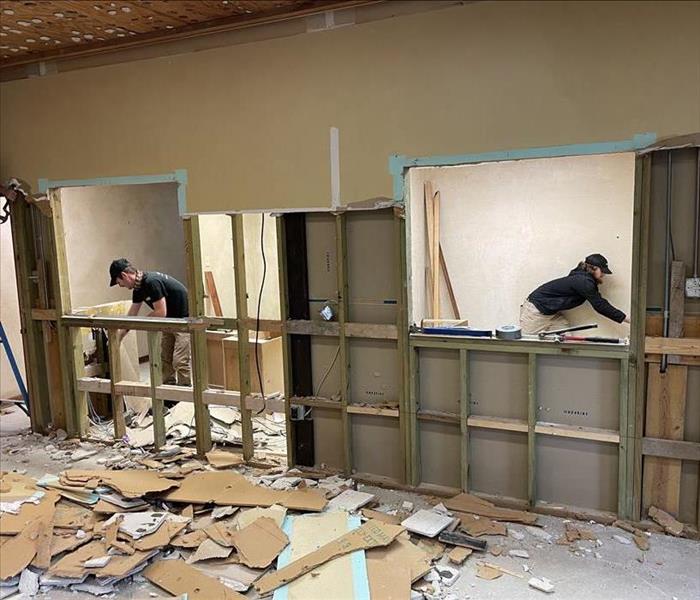Battling Mold After A Storm
9/16/2023 (Permalink)
When the skies clear after a storm or flooding in Baton Rouge, the immediate concerns may seem to fade away. However, the aftermath often leaves a hidden threat that can affect your home: mold. Mold growth is a common issue following water damage, and it's crucial for Baton Rouge homeowners to understand the risks and take proactive steps to address mold remediation. In this guide, we'll walk you through the process of mold remediation after storms and flooding, helping you safeguard your property and restore a healthy living environment.
Recognizing the Signs of Mold Infestation
Mold is a type of fungus that thrives in damp, humid environments. After a storm or flooding, your Baton Rouge home could become a breeding ground for mold if not properly addressed. Keep an eye out for the following signs that indicate mold may be present:
Musty Odor: A strong, musty smell is often a clear indication of mold growth. If you notice an unusual odor, investigate further.
Visible Mold: Mold can appear as discolored patches on walls, ceilings, and other surfaces. Pay close attention to areas that were exposed to water during the storm.
Act Quickly: The Importance of Timely Mold Remediation
Addressing mold growth promptly is essential to prevent it from spreading and causing further damage. Mold spores can spread through the air and settle in other areas of your home, exacerbating the problem. Swift action is crucial to minimize the extent of the infestation.
DIY vs. Professional Mold Remediation
While minor mold issues can sometimes be addressed with DIY methods, larger infestations require professional intervention. In Baton Rouge, where humidity levels are often high, it's best to consult a certified mold remediation specialist who understands the local climate and mold behavior. Professionals have the expertise, equipment, and protective gear needed to safely remove mold and prevent its return.
The Mold Remediation Process
A comprehensive mold remediation process typically includes the following steps:
Assessment: A mold remediation expert will assess the extent of the infestation and identify the source of moisture that led to its growth.
Containment: To prevent mold spores from spreading to unaffected areas, the contaminated area is sealed off using specialized barriers and negative air pressure.
Removal: Affected materials, such as drywall and insulation, are safely removed and disposed of. This step may involve HEPA vacuuming and thorough cleaning.
Dehumidification: Drying the affected area is crucial to prevent future mold growth. Dehumidifiers and proper ventilation help reduce moisture levels.
Prevention: Mold thrives in damp environments, so controlling humidity levels is key to preventing future infestations. Proper ventilation and sealing leaks will help keep mold at bay.
Tips for Preventing Future Mold Growth
After the mold has been successfully remediated, it's important to take steps to prevent its return:
Monitor Humidity: Use a hygrometer to measure indoor humidity levels and keep them between 30-50%. Consider using dehumidifiers in areas prone to moisture.
Prompt Repairs: Address any leaks or water damage promptly to prevent mold-friendly conditions from developing.
Proper Ventilation: Ensure proper ventilation in high-moisture areas such as bathrooms, kitchens, and basements.
Regular Inspections: Conduct routine inspections to catch any potential mold issues early before they become major problems.
Landscaping and Grading: Properly direct rainwater away from your home's foundation by maintaining proper landscaping and grading.
Mold remediation after storms and flooding is a critical aspect of maintaining a safe home environment in Baton Rouge. By understanding the signs of mold infestation, acting swiftly, and enlisting the help of professionals when necessary, you can effectively combat mold growth and protect your property. Remember, prevention is key, so implement the recommended tips to ensure your home remains mold-free for years to come. Your dedication to mold prevention will contribute to the well-being of your family and the longevity of your Baton Rouge home.



 24/7 Emergency Service
24/7 Emergency Service
